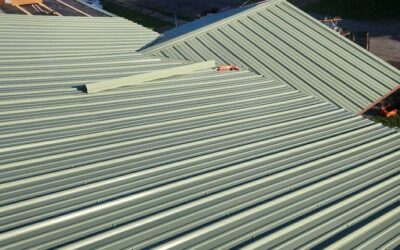Roof Fascia Replacement: Essential Guide to Protecting Your Roof and Home
When it comes to maintaining the integrity of your home’s roof, many homeowners overlook the importance of the roof fascia. While it may not be the most visible component of your roofing system, the fascia plays a critical role in both the structural integrity and aesthetic appearance of your home. Over time, fascia boards can become damaged due to wear and tear, moisture, pests, or poor maintenance. Replacing your roof fascia is an essential step in ensuring the longevity of your roofing system and preventing further damage to your home.
In this comprehensive guide, we will explore the importance of roof fascia, signs that it may need to be replaced, the fascia replacement process, materials to use, and how to maintain your fascia for long-term protection.
What is Roof Fascia?
The fascia is the long, horizontal board that runs along the edge of the roof. It is attached to the rafters and extends across the perimeter of the roof. The fascia plays a significant role in the roofing system by supporting the gutters, providing structural stability to the roof, and serving as the finished edge of the roofline. It also helps protect the roof and the rest of the home from water damage by directing water into the gutters, away from the roof and foundation.
Fascia boards come in various materials, including wood, vinyl, aluminum, and composite materials. Each material has its own advantages, and the choice of material often depends on the homeowner’s preferences, budget, and climate.
Why is Roof Fascia Important?
Fascia boards are an essential part of your roofing system for several reasons:
- Gutter Support: Fascia boards provide the necessary support for your gutters. The gutters are attached to the fascia, and they work together to direct rainwater away from the roof and the home. Properly functioning gutters help prevent water from pooling around the foundation, reducing the risk of water damage and foundation problems.
- Protection from the Elements: The fascia acts as a barrier against moisture, preventing rain, snow, and other debris from infiltrating the roof and attic space. A damaged fascia can lead to water leaking into the roofing structure, potentially causing mold growth, wood rot, and other severe issues.
- Pest Control: Fascia boards help prevent pests, such as insects, birds, and rodents, from entering the attic or roof space. A damaged or rotting fascia may leave openings that allow pests to infest the attic, which can cause significant damage to insulation, wiring, and structural components.
- Aesthetic Appeal: Fascia boards also play an aesthetic role in your home’s exterior appearance. They provide a clean, finished edge to the roofline, creating a cohesive and polished look. Fascia can be painted or stained to complement the color scheme of your home, adding to its curb appeal.
Signs Your Roof Fascia Needs to Be Replaced
Roof fascia is exposed to harsh weather conditions and constant wear, which can lead to deterioration over time. It’s important to inspect your fascia regularly to detect early signs of damage. Here are some common signs that your fascia may need to be replaced:
1. Rotting or Decaying Wood
One of the most obvious signs that your fascia needs replacement is the presence of rot or decay. Over time, exposure to moisture can cause wood fascia boards to weaken, soften, and rot. If you notice soft, spongy areas or a musty odor coming from the fascia, it’s time for a replacement.
2. Visible Cracks or Holes
If the fascia has visible cracks, holes, or splits, it may no longer be able to provide adequate support for your gutters or protect your roof from the elements. Cracks and holes allow water to penetrate the fascia and the underlying roof structure, leading to water damage and possible leaks.
3. Sagging Fascia
Sagging fascia is a clear indication that the board is no longer structurally sound. Fascia should remain straight and level; any sagging or bending could signal that the fascia has become too weakened to perform its function properly. This could be due to damage from water, pests, or general wear and tear.
4. Gutters Pulling Away from the Roof
If the gutters are pulling away from the roofline or have become detached from the fascia, it’s a sign that the fascia has lost its strength and is no longer able to support the gutters properly. This could lead to water overflow, which can cause damage to your roof and foundation.
5. Pest Infestation
If you notice a sudden increase in pest activity around the roofline or inside the attic, the fascia may be compromised. Rodents, insects, and birds often enter through damaged or rotting fascia boards. This can lead to further damage in the attic and the potential for costly repairs.
6. Peeling Paint or Staining
If you notice peeling paint or staining along the fascia, it could indicate prolonged exposure to moisture or water damage. While minor peeling paint may not require immediate replacement, extensive paint failure could be a sign of underlying wood damage that needs attention.
The Fascia Replacement Process
Replacing roof fascia is a process that requires careful attention and skill to ensure the job is done correctly. If you suspect your fascia needs replacing, it’s always best to hire a professional roofing contractor with experience in fascia installation. Below is an overview of the typical steps involved in replacing roof fascia:
1. Inspect the Area
Before replacing the fascia, a professional contractor will thoroughly inspect the roofline and fascia to assess the extent of the damage. This may involve checking for rot, mold, or pest infestation and determining whether the damage has spread to other areas of the roof or attic.
2. Remove the Old Fascia
Once the damage has been assessed, the old fascia board is removed. This may involve removing the gutters, which are typically attached to the fascia. The contractor will carefully detach the fascia from the rafters or trusses to avoid causing further damage to the roof structure.
3. Prepare the Area for Installation
Before installing the new fascia, the area is prepared by cleaning the rafters and checking for any other underlying issues, such as mold, rot, or damage to the roof decking. If necessary, the contractor will repair or replace any damaged components to ensure the new fascia will be installed securely.
4. Install the New Fascia
The new fascia board is carefully measured and cut to fit the roofline. Depending on the material used, the fascia may be secured with nails, screws, or clips. The new fascia is installed level and straight to ensure that it provides proper support for the gutters and creates a clean, finished edge for the roofline.
5. Reinstall the Gutters
Once the new fascia is installed, the gutters are reattached to the fascia. It is important that the gutters are properly secured to ensure that rainwater flows away from the roof and foundation. The contractor will also check that the gutters are pitched correctly to prevent water from pooling.
6. Paint or Stain (Optional)
If the fascia is made of wood, it may need to be painted or stained to protect it from the elements. A fresh coat of paint or stain will also enhance the appearance of the fascia and help it blend in with the rest of the home’s exterior.
Materials Used for Roof Fascia Replacement
When replacing roof fascia, it’s important to choose the right material to ensure durability, performance, and aesthetics. The most common materials used for fascia boards include:
1. Wood
Wood is a traditional material that offers a classic, natural appearance. It can be painted or stained to match the home’s exterior, but it requires regular maintenance to prevent rot, warping, and insect infestations. Wood is best suited for homes in dry climates or areas with minimal moisture.
2. Vinyl
Vinyl fascia is a low-maintenance option that is resistant to rot, fading, and cracking. It is available in a variety of colors and textures, making it a versatile choice for homeowners. Vinyl fascia is lightweight and easy to install, but it may not be as durable as other materials in extreme weather conditions.
3. Aluminum
Aluminum fascia is durable, lightweight, and resistant to corrosion. It can withstand harsh weather conditions, including heavy rain, snow, and high humidity. Aluminum fascia is often used in coastal areas or regions with high moisture levels, as it is resistant to rust and decay.
4. Fiber Cement
Fiber cement is a strong, durable material that is resistant to rot, pests, and fire. It is often used in custom or high-end homes due to its premium look and long-lasting performance. Fiber cement fascia is available in a variety of finishes and textures, but it can be heavier and more expensive than other materials.
Maintaining Your Roof Fascia
Once your roof fascia is replaced, it’s essential to maintain it to ensure its longevity and performance. Regular maintenance can prevent costly repairs and keep your fascia looking great. Here are some tips for maintaining your roof fascia:
- Inspect Regularly: Check the fascia for signs of damage, such as cracks, holes, or signs of water damage. Inspect the gutters as well to ensure they are properly attached and functioning.
- Clean Gutters: Clean your gutters regularly to prevent debris buildup, which can cause water to back up into the fascia. Clogged gutters can also lead to water overflow, which may damage the fascia and roof structure.
- Repaint or Restain Wood Fascia: If your fascia is made of wood, it may need to be repainted or restained periodically to protect it from moisture and prevent rotting.
- Check for Pests: Inspect the fascia and attic for signs of pests, such as rodents or insects, and take action to eliminate any infestations.
Conclusion
Roof fascia replacement is an essential part of maintaining your home’s roofing system. Fascia boards protect your home from water damage, pests, and structural issues, while also contributing to the aesthetic appeal of your roofline. By understanding the importance of fascia and knowing when it’s time to replace it, you can ensure that your home remains safe, secure,
 (440) 307-2060
(440) 307-2060


